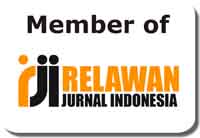Gaining Motivation on English Learning for Special Need Students Using Flashcards, Foldable Books and Posters in EFL Context
Abstract
Keywords
Full Text:
PDFReferences
Cheon, S. H., and Reeve, J. (2015). A classroom-based intervention to help teachers decrease students’ motivation. Journal of Contemporary Educational Psychology 1 (40), pp. 99-101.
Davis, C.D. (2000). Foreign language instruction: tips for accommodating deaf and hard-hearing and deaf students. Washington DC: Western Oregon University Press.
Dolorosa, S. V. (2016). Buku guru bahasa inggris tunarungu, buku bahasa inggris kurikulum 2013. Jakarta: Kemendikbud.
Ellis, R. (1997). Second Language Acquisition. Oxford: Oxford University Press.
Ghafoor, M. A. A. & Huang, J.Y. (2015). Survey on the use of application for deaf and hard hearing literacy. Presented in international conferences on computer, communication and control technology in Malaysia.
Hasstenteufel, P. (2009). The English language production of a deaf student – a case study. Journal Signos Ano 2, p. 71
Herrera-Fernandez, V. et al. (2014). Visual learning strategies to promote literacy skills in prelingually deaf readers. Sistema de InformaciónCientífica 10 (1), p. 3.
Saripah, W. & Syukri, S. (2017). Improving student’s motivation through a short stories in learning English. Alta’dib jurnal kajian ilmu kependidikan 10(2), pp. 109-126.
Lazanova, S. & Savtchev, B. (2009). Analysis of needs, constraints, practices, and challenges to the deaf and hard hearing impaired learners of languages. Preliminary research. Deaf port project.
Lichtert, et al. (2016) Diversity in deaf education: high standard competencies for teachers of the deaf and other qualified professionals: always necessary not always guaranteed. United States of America: Oxford University Press.
Mpofu, J. & Chimhenga, S. (2013). Challenges faced by hearing impaired pupils in learning: a case study of King George VI memorial school. Journal of Research & Method in Education 2(1), p.71.
National Council Accreditation of Teacher Education (2006). What makes teachers effective?http://www.ncate.org/dotnetnuke/LinkClick.aspx?fileticket=JFRrmWqa1jU%3D&tabid=361.
Nunan, D. (1992). Research Methods in Language Learning. Australia: Cambridge University Press.
Razalli, A. R. et al. (2018). Using text with pictures in primary school to improve reading comprehension for hearing impaired students. Presented in International conference on special education in Southeast Asia region in Malaysia.
Sass- Lehrer, M. and Young, A. (2016). Diversity in deaf education: evidence-based practice in early intervention: the proof of the pudding is in the eating. United States of America: Oxford University Press.
Stinson, M. S., Lisa, B. Elliot, and Kelly, R.R. (2017). Deaf of hard-hearing high school and college students’ perceptions of speech to text and interpreting/note taking service and motivation. Journal of development physical disabilities, 29, pp. 131-152.
Weller, M. (2005). Motivation. Los Angeles Business Journal. p.1.
Williams, Marion, Sarah, M., & Ryan, S. (2015). Exploring Psychology in Language Learning and Teaching. Oxford: Oxford University Press.
DOI: http://dx.doi.org/10.31332/lkw.v5i2.1303
Copyright (c) 2019 Suhartini Syukri

This work is licensed under a Creative Commons Attribution-ShareAlike 4.0 International License.
Langkawi: Journal of The Association for Arabic and English indexed by:


















.png)
.png)

.png)
2.png)








